-
 Bitcoin
Bitcoin $106,754.6083
1.33% -
 Ethereum
Ethereum $2,625.8249
3.80% -
 Tether USDt
Tether USDt $1.0001
-0.03% -
 XRP
XRP $2.1891
1.67% -
 BNB
BNB $654.5220
0.66% -
 Solana
Solana $156.9428
7.28% -
 USDC
USDC $0.9998
0.00% -
 Dogecoin
Dogecoin $0.1780
1.14% -
 TRON
TRON $0.2706
-0.16% -
 Cardano
Cardano $0.6470
2.77% -
 Hyperliquid
Hyperliquid $44.6467
10.24% -
 Sui
Sui $3.1128
3.86% -
 Bitcoin Cash
Bitcoin Cash $455.7646
3.00% -
 Chainlink
Chainlink $13.6858
4.08% -
 UNUS SED LEO
UNUS SED LEO $9.2682
0.21% -
 Avalanche
Avalanche $19.7433
3.79% -
 Stellar
Stellar $0.2616
1.64% -
 Toncoin
Toncoin $3.0222
2.19% -
 Shiba Inu
Shiba Inu $0.0...01220
1.49% -
 Hedera
Hedera $0.1580
2.75% -
 Litecoin
Litecoin $87.4964
2.29% -
 Polkadot
Polkadot $3.8958
3.05% -
 Ethena USDe
Ethena USDe $1.0000
-0.04% -
 Monero
Monero $317.2263
0.26% -
 Bitget Token
Bitget Token $4.5985
1.68% -
 Dai
Dai $0.9999
0.00% -
 Pepe
Pepe $0.0...01140
2.44% -
 Uniswap
Uniswap $7.6065
5.29% -
 Pi
Pi $0.6042
-2.00% -
 Aave
Aave $289.6343
6.02%
Is it a trap when CCI falls back immediately after breaking through +100?
A rapid CCI drop after +100 may signal a bear trap or retracement, requiring confirmation through price action, volume, and other indicators.
Jun 16, 2025 at 01:49 pm
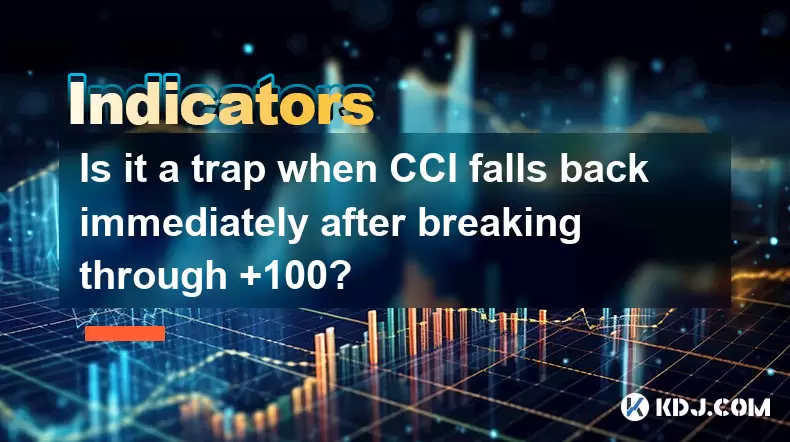
Understanding the CCI Indicator in Cryptocurrency Trading
The Commodity Channel Index (CCI) is a widely used technical analysis tool in cryptocurrency trading. Originally developed for commodities, it has found significant application in analyzing crypto assets due to their volatile nature. The CCI measures the current price level relative to an average price over a given period, typically 14. It oscillates above and below zero, with key thresholds at +100 and -100.
When the CCI crosses above +100, it indicates that the asset is entering overbought territory, potentially signaling strength or momentum in the upward direction. However, a rapid decline or fall back after such a breakout raises concerns among traders about whether this pattern is a trap or just a normal retracement.
Important: Traders should not rely solely on CCI readings but combine them with other indicators and price action analysis.
What Does a Rapid CCI Drop After Breaking +100 Mean?
A sharp drop of the CCI indicator from above +100 back below can signal several things depending on the broader market context. In many cases, it suggests that the bullish momentum that pushed the price up was short-lived or unsustainable. This could be due to profit-taking by institutional players or a lack of continued buying pressure.
In some situations, especially during strong uptrends, this kind of behavior might just be a temporary pullback rather than a reversal. However, when it occurs repeatedly near resistance levels or in overbought zones, it may indicate a bear trap — where buyers are lured into long positions only to see prices reverse sharply.
Important: Context matters. Always consider candlestick patterns, volume, and support/resistance levels alongside CCI movements.
How Can You Identify a Bear Trap Using CCI?
Identifying a bear trap using the CCI indicator requires careful observation of how the price reacts after the initial breakout. Here's how you can analyze:
- Watch for divergence: If the price makes a new high but the CCI fails to reach a new high, it could signal weakening momentum.
- Check for rejection candles: A large bearish candle immediately following the CCI drop can confirm a reversal or trap scenario.
- Analyze volume: A surge in selling volume during the CCI drop supports the likelihood of a trap.
- Look for failed breakouts: If the price breaks out of a consolidation zone but quickly reverses, it might be a false move designed to trap traders.
Important: Divergence between price and CCI often precedes a trend change, making it a crucial signal to watch.
Steps to Confirm Whether It’s a Trap or Not
To avoid being caught in a trap, follow these steps methodically:
- Observe multiple timeframes: Check higher timeframes like 4H or daily charts to confirm if the breakout aligns with broader trends.
- Use moving averages: Overlay a 20 EMA or 50 SMA to see if the price respects those levels during the pullback.
- Monitor RSI or MACD: Cross-check with other momentum indicators to confirm overbought conditions or bearish crossovers.
- Wait for confirmation candles: Don’t act immediately. Wait for a clear bearish candle closing below key support before confirming a trap.
- Set tight stop losses: If entering a trade during such setups, always place protective stops to manage risk effectively.
Important: Patience and confirmation are critical to avoiding false signals and traps.
Trading Strategies Around CCI Breakouts and Reversals
For traders who want to navigate around potential traps, here are some practical strategies:
- Counter-trend entry: After confirming a bearish reversal post-CCI drop, enter short positions with defined targets and stop-losses.
- Range-bound strategy: Trade within consolidating zones by placing sell orders near resistance when CCI hits +100 and shows signs of turning down.
- Breakout confirmation: Only enter long positions once the CCI sustains above +100 and price confirms with a bullish close beyond key resistance.
- Scalping approach: Use lower timeframes like 15-minute or 5-minute charts to capture quick moves after CCI drops, especially if volume spikes.
- Hedging: For advanced traders, hedge long exposure with futures or options if CCI shows early signs of reversal but price hasn't confirmed it yet.
Important: Strategy effectiveness varies with market conditions; adapt accordingly and use proper risk management.
Frequently Asked Questions
Q: What does CCI above +100 usually indicate?
A: When the CCI rises above +100, it generally signals overbought conditions and strong upward momentum. However, it doesn't guarantee continued price increases and must be interpreted in context.
Q: Can CCI alone be used to predict bear traps?
A: No, the CCI indicator alone isn't sufficient to identify bear traps. It should be combined with volume, candlestick patterns, and other technical tools for reliable analysis.
Q: Is a rapid CCI drop always a bear trap?
A: Not necessarily. A rapid drop after +100 could be a normal retracement in a healthy uptrend. Confirmation through price action and additional indicators is essential.
Q: How can I differentiate between a trap and a genuine breakout using CCI?
A: Look for price rejection, volume spikes, and divergence. If the price fails to hold above key levels after CCI drops, it's more likely a trap than a genuine continuation.
Disclaimer:info@kdj.com
The information provided is not trading advice. kdj.com does not assume any responsibility for any investments made based on the information provided in this article. Cryptocurrencies are highly volatile and it is highly recommended that you invest with caution after thorough research!
If you believe that the content used on this website infringes your copyright, please contact us immediately (info@kdj.com) and we will delete it promptly.
- 2025-W Uncirculated American Gold Eagle and Dr. Vera Rubin Quarter Mark New Products
- 2025-06-13 06:25:13
- Ruvi AI (RVU) Leverages Blockchain and Artificial Intelligence to Disrupt Marketing, Entertainment, and Finance
- 2025-06-13 07:05:12
- H100 Group AB Raises 101 Million SEK (Approximately $10.6 Million) to Bolster Bitcoin Reserves
- 2025-06-13 06:25:13
- Galaxy Digital CEO Mike Novogratz Says Bitcoin Will Replace Gold and Go to $1,000,000
- 2025-06-13 06:45:13
- Trust Wallet Token (TWT) Price Drops 5.7% as RWA Integration Plans Ignite Excitement
- 2025-06-13 06:45:13
- Ethereum (ETH) Is in the Second Phase of a Three-Stage Market Cycle
- 2025-06-13 07:25:13
Related knowledge
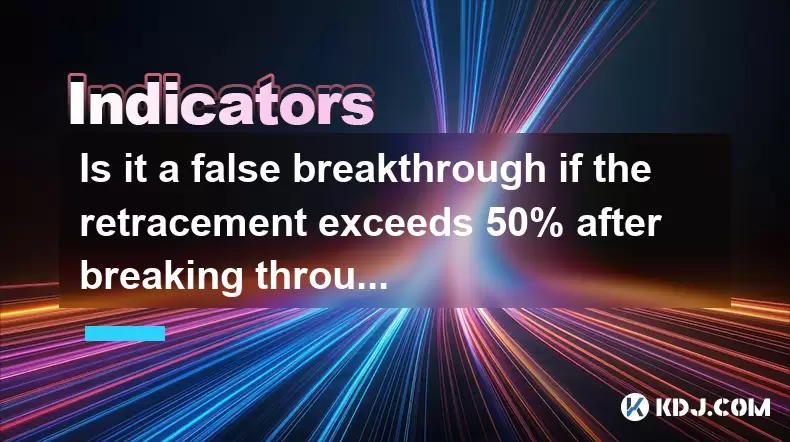
Is it a false breakthrough if the retracement exceeds 50% after breaking through the platform?
Jun 17,2025 at 08:01pm
Understanding Breakouts and Retracements in Cryptocurrency TradingIn cryptocurrency trading, breakouts refer to when the price of an asset moves beyond a defined support or resistance level with increased volume. These events often attract traders looking to capitalize on momentum. However, not all breakouts are valid. A false breakout, also known as a ...
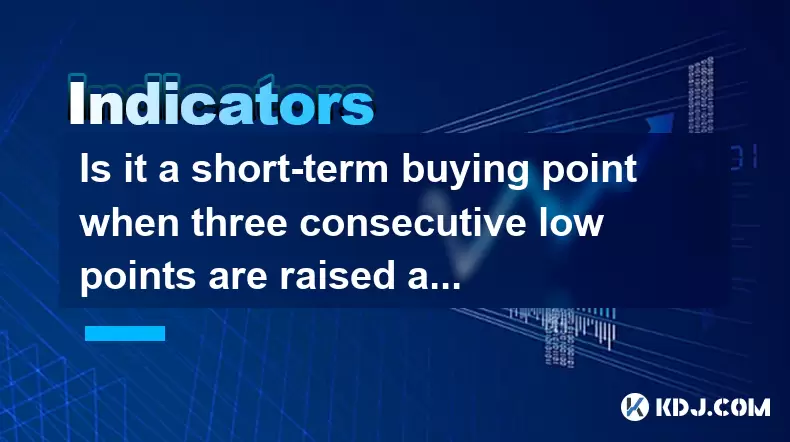
Is it a short-term buying point when three consecutive low points are raised at the 30-minute level?
Jun 17,2025 at 08:14pm
Understanding the Three Consecutive Low Points PatternIn technical analysis, identifying patterns in price movements is essential for making informed trading decisions. One such pattern that traders often observe is when three consecutive low points are raised within a specific timeframe — in this case, the 30-minute chart. This pattern suggests a poten...
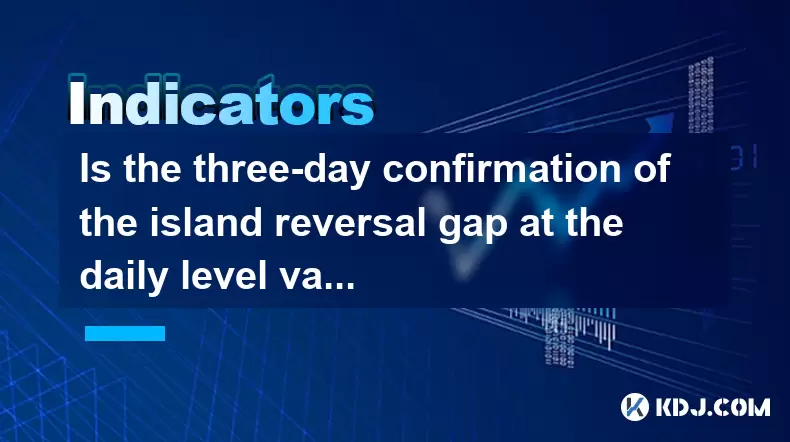
Is the three-day confirmation of the island reversal gap at the daily level valid?
Jun 17,2025 at 09:49pm
Understanding the Island Reversal Gap in Cryptocurrency TradingIn cryptocurrency trading, technical analysis plays a pivotal role in identifying potential market reversals. One such pattern is the island reversal gap, which signals a possible trend change. This pattern consists of a gap followed by a period of consolidation or sideways movement and then...
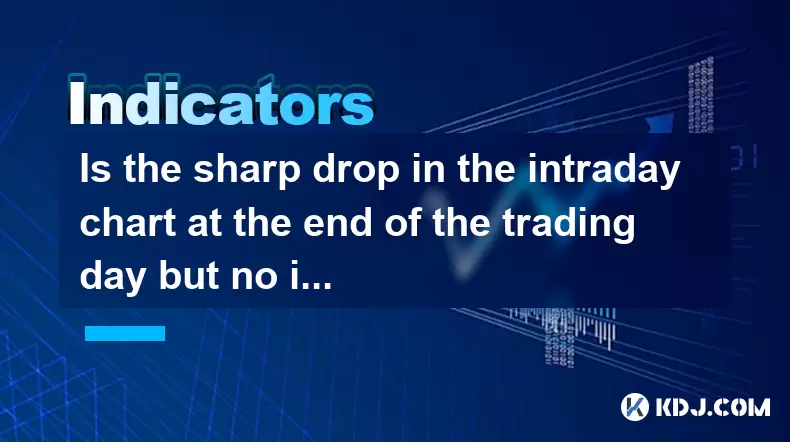
Is the sharp drop in the intraday chart at the end of the trading day but no increase in volume a trap to sell?
Jun 17,2025 at 08:35pm
Understanding the Intraday Chart DynamicsIn cryptocurrency trading, intraday charts are widely used by traders to analyze short-term price movements. These charts display price fluctuations within a single trading day and help traders make informed decisions based on real-time data. One common phenomenon observed is a sharp drop in price near the end of...
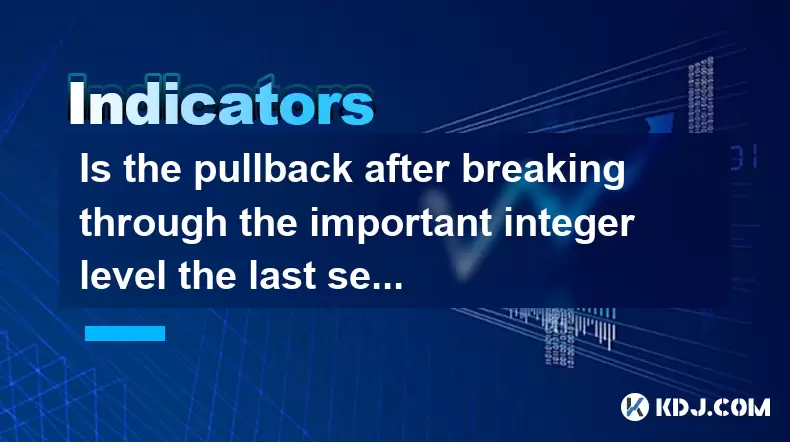
Is the pullback after breaking through the important integer level the last selling point?
Jun 17,2025 at 08:57pm
Understanding Important Integer Levels in Cryptocurrency TradingIn the world of cryptocurrency trading, certain price levels hold significant psychological and technical importance. These are commonly referred to as important integer levels—such as $10,000 for Bitcoin or $1,000 for Ethereum. These levels often act as strong support or resistance zones d...
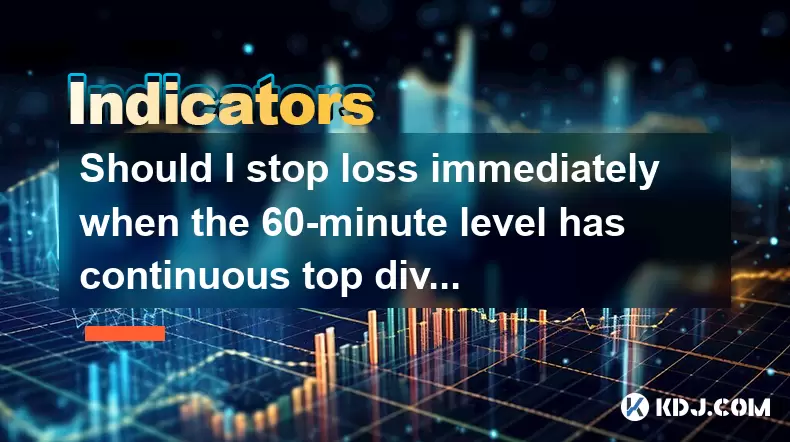
Should I stop loss immediately when the 60-minute level has continuous top divergence?
Jun 17,2025 at 05:28pm
Understanding Top Divergence in the 60-Minute ChartIn cryptocurrency trading, top divergence refers to a technical signal where the price of an asset makes higher highs while the indicator (often RSI or MACD) makes lower lows. This is commonly interpreted as a sign of weakening momentum and potential reversal. When this occurs on the 60-minute chart, it...

Is it a false breakthrough if the retracement exceeds 50% after breaking through the platform?
Jun 17,2025 at 08:01pm
Understanding Breakouts and Retracements in Cryptocurrency TradingIn cryptocurrency trading, breakouts refer to when the price of an asset moves beyond a defined support or resistance level with increased volume. These events often attract traders looking to capitalize on momentum. However, not all breakouts are valid. A false breakout, also known as a ...

Is it a short-term buying point when three consecutive low points are raised at the 30-minute level?
Jun 17,2025 at 08:14pm
Understanding the Three Consecutive Low Points PatternIn technical analysis, identifying patterns in price movements is essential for making informed trading decisions. One such pattern that traders often observe is when three consecutive low points are raised within a specific timeframe — in this case, the 30-minute chart. This pattern suggests a poten...

Is the three-day confirmation of the island reversal gap at the daily level valid?
Jun 17,2025 at 09:49pm
Understanding the Island Reversal Gap in Cryptocurrency TradingIn cryptocurrency trading, technical analysis plays a pivotal role in identifying potential market reversals. One such pattern is the island reversal gap, which signals a possible trend change. This pattern consists of a gap followed by a period of consolidation or sideways movement and then...

Is the sharp drop in the intraday chart at the end of the trading day but no increase in volume a trap to sell?
Jun 17,2025 at 08:35pm
Understanding the Intraday Chart DynamicsIn cryptocurrency trading, intraday charts are widely used by traders to analyze short-term price movements. These charts display price fluctuations within a single trading day and help traders make informed decisions based on real-time data. One common phenomenon observed is a sharp drop in price near the end of...

Is the pullback after breaking through the important integer level the last selling point?
Jun 17,2025 at 08:57pm
Understanding Important Integer Levels in Cryptocurrency TradingIn the world of cryptocurrency trading, certain price levels hold significant psychological and technical importance. These are commonly referred to as important integer levels—such as $10,000 for Bitcoin or $1,000 for Ethereum. These levels often act as strong support or resistance zones d...

Should I stop loss immediately when the 60-minute level has continuous top divergence?
Jun 17,2025 at 05:28pm
Understanding Top Divergence in the 60-Minute ChartIn cryptocurrency trading, top divergence refers to a technical signal where the price of an asset makes higher highs while the indicator (often RSI or MACD) makes lower lows. This is commonly interpreted as a sign of weakening momentum and potential reversal. When this occurs on the 60-minute chart, it...
See all articles

























































































